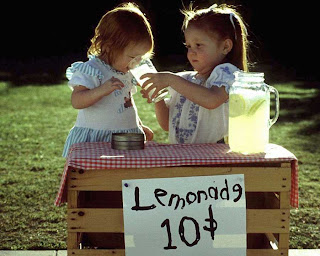
The original, inexpensive, quick, easy to make, easy to drink, naturally fermented, lemon, hot-weather, thirst quencher.
Batch Size: 5.00 gal
Boil Size: 2.30 gal
Estimated OG: 1.064 SG
Estimated Color: 1.9 SRM
Boil Time: 30 Minutes
ABV: 10.4%
Skeeter Pee
Ingredients:
Amt Name
16.0 cup Washington, DC

7 lbs Sugar, Table (16 cups)
0.33 cup Lemon JuicE
Primary (Stir Ingredients)
64.00 oz ReaLemon
0.75 tsp Tannin
1.00 tsp Yeast Energizer
3.00 tsp Yeast Nutrient
Primary (~2 days)1.00 Yeast Slurry32.00 oz ReaLemon
3.00 tsp Yeast Nutrient
1.00 tsp Yeast Energizer
Secondary (0.995-0.998 SG) (degas)
2.50 tsp Potassium sorbate (sorbate)
0.50 tsp Potassium metabisulfite (Kmeta)
1.00 Sparkolliod - Clears without the Sparkolloid in 30-45 days
Bottling/Kegging (2 weeks after sparklloid)
2.30 lb Sugar, Table (Sucrose)
After two weeks, the Skeeter Pee should be crystal clear. Rack into a clean, sanitized carboy, add 6 cups sugar, and stir to dissolve. Wait two weeks to be sure no new fermentation begins and bottle.
Notes from Lon DePoppe:
"Not a “hard lemonade” because too many people have tried the commercial versions and they tend to make a mental impression of what it’s going to taste like before trying it. When it doesn’t taste just like the commercial versions (which are usually 5% alcohol, lemon flavored malt beverages) they conclude that it’s a poor reproduction. This stuff isn’t a reproduction; it’s the original home-style without the big marketing budget and price tag. Please be advised that you need to keep an eye on those you serve this to. Because it drinks easily on a hot day and the alcohol is about double that of commercial hard lemonades and beer, it is easy to accidentally over consume; it sneaks up on you real fast."
If you don't have a slurry to start your batch.
Some people have had luck simply sprinkling the yeast on top of the must in the place of using a slurry. Be cautioned though, that the ferment will take much longer to get started. It helps to whip the must with a wire whisk to introduce lots of oxygen and keep the must warm. Be prepared to wait up to a week to see signs of ferment. An alternative method that has been successful is starting a 1 gallon batch of wine using frozen concentrate, letting it go for 5 days to a week to get good and active, and then using the whole thing in place of a slurry.






